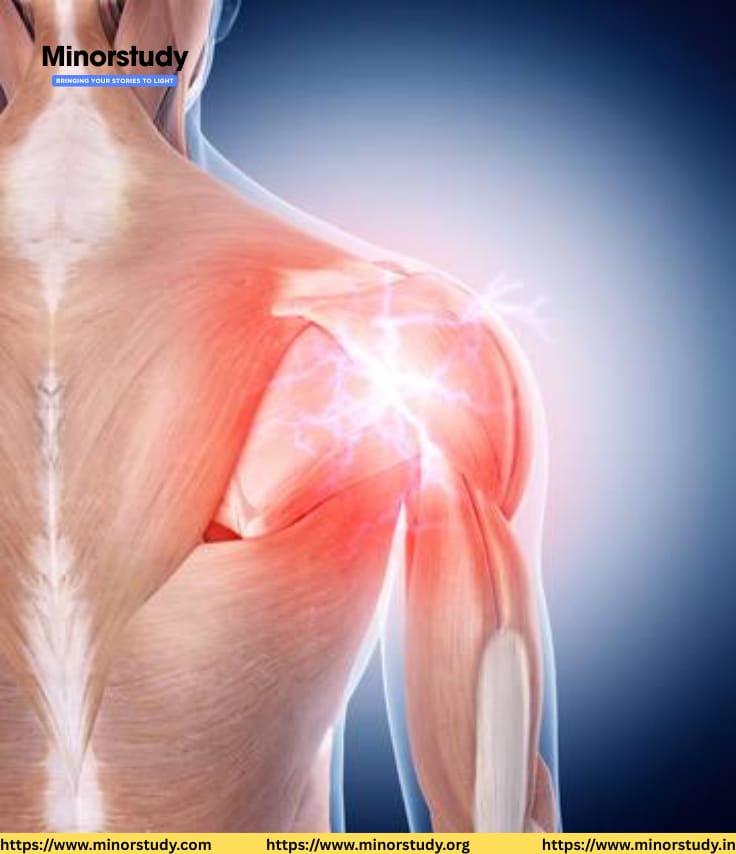🦾 7 Powerful Realities of Shoulder Instability Repair – From Pain to Strength
Shoulder Instability Repair: Shoulder instability can feel like your entire upper body is at risk of falling apart. Every movement is met with pain, fear, or even dislocation, and that constant anxiety can affect everything—from your confidence to your sleep. Thankfully, shoulder instability repair has become a life-transforming surgical option for many.
- 🧠 What Is Shoulder Instability?
- 🛠️ What Is Shoulder Instability Repair?
- 🕰️ Timeline: Evolution of Shoulder Instability Repair
- 🧬 History: How the Journey to Shoulder Stability Began
- 📚 7 Empowering Facts About Shoulder Instability Repair
- ❓ Frequently Asked Questions (FAQs)
- Q1. How do I know if I need shoulder instability repair?
- Q2. Is surgery always necessary?
- Q3. What is the success rate?
- Q4. Will I regain full motion?
- Q5. Can I avoid surgery altogether?
- 🧩 Significance in Medical Science and Society
- 🎯 Importance in Our Lives
- ❤️ Emotional Impact: From Frustration to Freedom
- 🏃 Observance and Awareness
- 🎉 Inspiring Wishing Messages
- 💡 Important Takeaways
- 🌄 Daily Life Impact: A Personal Perspective
- 🏁 Conclusion: A Second Chance at Strength
In this emotionally resonant and knowledge-rich article, we explore the history, science, significance, timeline, facts, FAQs, societal impact, and why this procedure is a real comeback story for the human body.
🧠 What Is Shoulder Instability?
Shoulder instability refers to a condition where the shoulder joint becomes loose or dislocates repeatedly, usually due to injury, weak ligaments, or overuse. The shoulder is the most mobile joint in the body, but that mobility comes with a price—it’s also the least stable.
There are two main types:
Traumatic Instability – Often due to a dislocation or sports injury.
Atraumatic Instability – Caused by general ligament laxity, repetitive stress, or genetics.
🛠️ What Is Shoulder Instability Repair?
Shoulder instability repair is a surgical intervention aimed at restoring stability, strength, and function to a shoulder prone to dislocation or chronic subluxation (partial dislocation). It involves tightening loose ligaments, repairing torn labrum, or reconstructing the capsule.
Types of surgeries:
Arthroscopic Bankart Repair
Open Stabilization Surgery
Latarjet Procedure (bone graft for severe cases)
🕰️ Timeline: Evolution of Shoulder Instability Repair
| Year | Milestone |
|---|---|
| 1938 | First documented shoulder dislocation surgery |
| 1950s | Bankart procedure gains popularity |
| 1980s | Introduction of arthroscopic (minimally invasive) methods |
| 1990s | Use of biodegradable anchors for labral repair |
| 2000s–2020s | Rise of robotic assistance, 3D imaging, and faster rehab |
🧬 History: How the Journey to Shoulder Stability Began
The first shoulder surgeries aimed at treating instability date back to the early 1900s. But it wasn’t until Dr. Arthur Bankart, a British orthopedic surgeon, identified a tear in the labrum (cartilage) in recurrent dislocations, that real understanding began.
Bankart Lesion became the hallmark of instability.
Open procedures were common until the arthroscopic revolution in the 1980s, making surgeries less painful, less invasive, and quicker to recover.
Modern medicine now allows most patients to return to sports, work, or pain-free daily life within months.
📚 7 Empowering Facts About Shoulder Instability Repair
💥 Over 90% of athletes return to sport after a successful repair.
🧑⚕️ The procedure is minimally invasive in most cases.
🧩 Shoulder instability is responsible for 50% of all joint dislocations.
🧬 Genetics plays a role—some people have more “elastic” joints.
🛠️ Advanced surgeries now use suture anchors and 3D imaging.
🏋️♀️ Post-surgery physical therapy can improve overall shoulder strength.
⏱️ Most patients return to normal activities in 4 to 6 months.
❓ Frequently Asked Questions (FAQs)
Q1. How do I know if I need shoulder instability repair?
If your shoulder dislocates frequently, feels like it’s “slipping out,” or causes pain during certain motions, consult an orthopedic surgeon.
Q2. Is surgery always necessary?
Not always. Physical therapy may help in mild cases. But if instability persists or impacts your quality of life, surgery is a wise option.
Q3. What is the success rate?
Success rates exceed 90% in patients who follow proper rehab and avoid re-injury.
Q4. Will I regain full motion?
In most cases, yes. Though it may take 6–12 months of gradual stretching and strengthening.
Q5. Can I avoid surgery altogether?
Yes, with early physical therapy, strength training, and lifestyle modifications. However, chronic dislocators often need surgery to avoid joint damage.
🧩 Significance in Medical Science and Society
Shoulder instability repair is not just a surgery—it’s a gateway to renewed freedom. In a society where sports, physical labor, and even parenting demand upper-body function, shoulder health is vital.
⚕️ Medical Significance:
Prevents arthritis, nerve damage, and labral wear
Restores range of motion and confidence
Helps athletes return to peak performance
🌍 Societal Significance:
Enables manual workers to stay employed
Restores independence in the elderly
Supports active youth in sports and physical activity
🎯 Importance in Our Lives
A dislocated or unstable shoulder can be emotionally and physically draining. It affects:
Driving
Cooking
Holding a baby
Sleeping on one side
Carrying bags or backpacks
Repairing it can restore joy, confidence, and full functionality, especially in active adults, athletes, dancers, and laborers.
❤️ Emotional Impact: From Frustration to Freedom
Shoulder instability is often invisible to others—but its impact is deeply felt by the person living with it. Many report:
Feeling anxious during workouts or normal tasks
Constant fear of re-dislocation
Avoidance of physical contact or social events
Post-surgery, there’s a mental and emotional uplift. With each step of healing, patients rediscover their body’s power and reliability.
🏃 Observance and Awareness
While there’s no specific Shoulder Instability Day, it is acknowledged during:
World Physiotherapy Day (September 8)
Orthopedic Awareness Month (April)
World Arthritis Day (October 12) – Shoulder instability can cause joint wear
🗓️ Rehabilitation Awareness
Many hospitals and sports clinics run rehab awareness camps and provide free screenings for shoulder issues—especially among athletes and youth.
🎉 Inspiring Wishing Messages
💪 “To every shoulder that’s ever felt weak—may you return stronger than ever.”
🧘 “Healing isn’t just physical—it’s a journey of reclaiming strength and trust in your body.”
✨ “Wishing you courage before the surgery, and confidence after.”
⚕️ “To every repaired shoulder—thank you for not giving up on life’s movements.”
🕊️ “May every pain you’ve endured become the power that pushes you forward.”
💡 Important Takeaways
Shoulder instability is common yet often misunderstood.
Surgery isn’t always necessary, but in many cases, it restores life quality.
Rehab is crucial for full recovery and prevention of re-injury.
Emotional healing is just as important as physical repair.
The procedure is a symbol of modern orthopedic success.
🌄 Daily Life Impact: A Personal Perspective
For someone recovering from this surgery:
🛏️ Sleeping becomes more restful.
👜 You can carry your bag again without fear.
🧼 Dressing and bathing feel effortless.
🎯 Focus returns—no more fear of sudden pain.
Whether you’re a student, parent, gym-goer, or professional, shoulder health is life health.
🏁 Conclusion: A Second Chance at Strength
Shoulder instability repair is more than just a physical fix—it is hope restored, movement regained, and fear conquered. While the journey includes pain and rehab, it ends in empowerment.
“Your shoulder may have failed you once, but with the right repair and care, it can support every dream you dare to lift.”
Let us celebrate this advancement of orthopedic science and human resilience.








